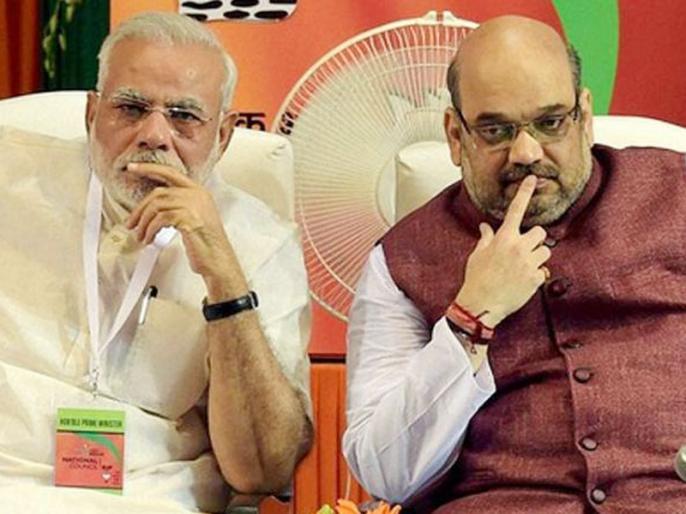Ahmed Raza
The spectacular majority mark for Aam Aadmi Party (AAP) over the BJP in Delhi assembly elections did not astonish people – landslide victory of AAP with 67 out of 70 seats in 2014, followed by BJP’s victory in local bodies in 2017 and then the parliamentary election in 2019 – people have time and again shown different voting patterns in the last six years. This time, the BJP not only tried hard to lose no prospect in maligning AAP through insensitive and insensible remarks but also exercised routine communal propaganda through its campaigns. It has been instrumentally polarizing communities by setting narratives like ‘Tukde-Tukde gang’ and portraying Shaheen Bagh protestors as ‘anti national elements.’ However, the people of Delhi prioritized AAP’s performances over the last five years casting their votes in favour of good governance.
Although we are yet to witness the top leadership of BJP acknowledging how AAP has been tending to basic facilities in localities in accordance with the promises made in the 2014 election, a comment strong enough from a local BJP supporter outlines the truth. Against AAP’s strong leadership face is Delhi’s present unit chief and former Bhojpuri actor Manoj Tiwari. When asked why he would vote for the local AAP candidate and not Tiwari, a staunch BJP supporter explained that even he were to discount Tiwari’s theatrics, he could not vote for him as he is not from the Capital and has no real connect to understand the local issues. A closer look at the state of affairs gives us broadly five broad areas responsible for BJP’s humiliating defeat in the Delhi assembly elections.
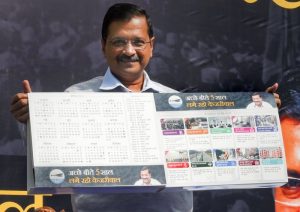
Dominance of local issues over national issues
Despite BJP’s thumping victory in the previous general election, they failed to identify the relevance of local over national to secure trust of the people of Delhi. The electoral battle for Delhi government 2020 rounded up between AAP and BJP with local agendas and national issues respectively keeping Congress aside only as a spectator. On one hand, BJP tried to sell out its achievements made in the last five years under PM Narendra Modi’s rigorous marketing campaign; on the other hand, AAP continued engaging itself to reach out to the voters by publicizing the good governance focused on health, education, transportation, and social welfare. People in Delhi already happen to be an eye witness of both the social welfare measures taken by the AAP government and the polarizing hate speeches in BJP’s election rallies. The manner in which BJP propagated its election campaigning through its faulty idea of nationalism and national security marginalized the local level issues which were actively addressed by the AAP government in the last five years. This rhetoric of an endangered national security that the BJP played acted as hit-wicket for its defeat.
While BJP thrived on issues like abrogation of Article 370, Citizenship Amendment Act (CAA) and Ram Mandir dispute, AAP paid attention to local voices. Mohalla clinics, modernization of government schools, installation of WiFi, freebies for electricity, water supply and reduced transportation costs are some noteworthy schemes by the AAP that acted as catalysts for accommodating the party directly into the heart of its cross caste voters.
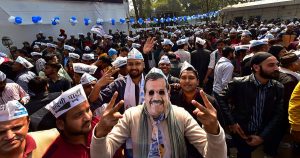
Missing anti-incumbency factor
The performance grade of AAP always stands on top on the basis of a number of surveys and reports conducted independently, leaving the minimum level of scope for criticisms as seventy percents of the promises made in 2014 election proved to be satisfactory. The AAP model of development including health sector and education emerged as a role model for other state governments as there have been outstanding transformations of schools and hospitals. The Mohalla clinic as initiatives towards free and easy accessibility of medical facilities reaching out to every strata of society with minimum government expenditures remained an inspiration and encouragement for other governments as well. Following the promises made in 2015, AAP again shocked the Opposition parties by introducing doorstep delivery, deployment of security personnel at government buses, free treatment for accident victims and so on. These measures increased the confidence level of voters from lower and middle classes and strongly backed in favour of AAP.
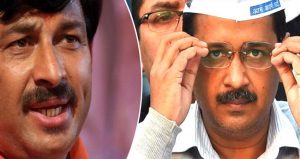
Arvind Kejriwal Versus Manoj Tiwari
The absence of the BJP’s CM candidate against the dynamic and popular leadership of Arvind Kejriwal amounted to be a huge factor for underperformance of the BJP. Where Manoj Tiwari is not even remotely connected with local grievances and issues, Kejriwal has always been a front runner for the Chief Minister post among the voters due to his simplicity and citizen-friendly behaviour. Although, the top leadership in the BJP tried to convince the voters by portraying Narendra Modi as the stalwart and architect of New India, the campaign failed to make an impact due to absence of facts and figures supporting the claim.
Violence in Delhi and dubious role of Police
BJP’s defeat in the Delhi election may also be linked with the inefficiency of Delhi Police in controlling the student protestors in Jamia Millia Islamia, Aligarh Muslim University, Jawaharlal Nehru University and other sites protesting against the draconian CAA. Hundreds of videos and images captured by students, bystanders and protestors are proof to the partiality with which the Delhi Police responded to the crowds, often peacefully protesting against the Act. The credibility of Delhi Police has been observed as dubious, qualm and distrusting and one does not have to be a political expert to see the Police’s biased outrage against a particular group of protestors. The Police has actively been acting as politically guided perpetrators of these incidents where a section of them, including Sharjeel Imam, have been selectively punished while the large number of masked culprits responsible for JNU’s violence remain free from police radar.
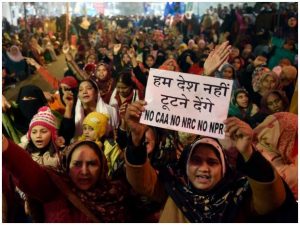
Backfire of Shaheen Bagh issue
BJP’s campaigning for Delhi election speed up in just twenty days when it hailed Shaheen Bagh as the epicenter of polarization so as to accommodate voters on communal lines. BJP could not have thought how disastrous this would have emerged for the party. When it was not able to counter AAP’s model of development, BJP launched its campaign of defaming Shaheen Bagh protesters. Leaders from the top levels, including the PM and Home Minister indulged in hate speech giving it a communal angle and turning the whole idea of reclaiming secularism into an ‘anti national’ war of sorts. The political parties and leaders dissenting against the CAA, including AAP and Congress were directly hit out by the BJP as traitors and conspirators against the nation, inciting the voters to throw Kejriwal out of power from Delhi. Keeping this strategy as a master stroke, the BJP floated an idea of tarnishing the image of the AAP as ‘anti national’ so as to polarize the voters on nationalist propaganda. It is praiseworthy how even after almost two months of the sit-in, Shaheen Bagh protest remains a legal and peaceful protest against the CAA having nothing to do with any political party.
Consequences of VVIP hate speech
The way AAP has shown its political maturity in countering BJP’s top leadership’s unprofessional remarks and unparliamentary speeches delivered during election campaigning played a decisive role for the voters in Delhi. The voters have shown sharp political awareness and sensibility in differentiating between hate speech and truth, thus failing BJP’s strategy to incite selective hatred for sections dividing them into communal lines.
The poll verdict of the Delhi assembly 2020 should be viewed as a foundation stone for secular and issue based politics proving that even a newly formed AAP can defeat the world’s largest political party BJP based solely on the principles of development, secularism and integrity.
(Ahmed Raza is Author, Columnist & Assistant Professor of Department of Public Administration, MANUU (a central university) Hyderabad, India)


